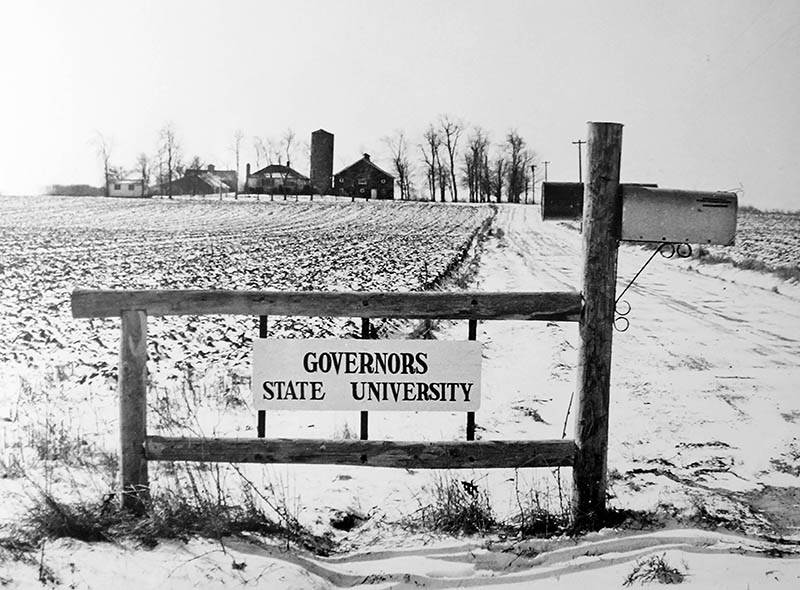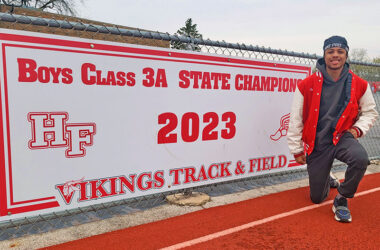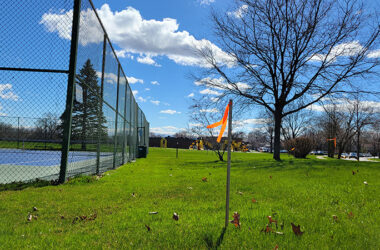The past 50 years of experimentation and growth has led GSU to become a comprehensive university in the South Suburbs. Its outstanding faculty has taught more than 45,000 graduates who have taken their degrees into the work world.
Happy 50th anniversary Governors State University!
started 50 years ago with
750 acres of Will County
farmland. (Provided photos)
The past 50 years of experimentation and growth has led GSU to become a comprehensive university in the South Suburbs. Its outstanding faculty has taught more than 45,000 graduates who have taken their degrees into the work world.
In the 1960s, leaders in the South Suburbs had been pushing for a university to serve the growing population. Then Rep. Tony Scariano Sr. of Park Forest, a member of the Education Committee in the Illinois House of Representatives, made the pitch to the legislature and won over enough votes to support a university in the South Suburbs.
GSU’s first president.
GSU would not compete with the network of junior colleges. It would offer junior and senior classes to complete a bachelor’s degree and master’s degree programs.
GSU was founded on July 17, 1969. Gov. Richard Ogilvie officially signed the legislation at a dinner at Olympia Fields Country Club.
The university had 750 acres of farmland in Park Forest South (now University Park) off Stuenkel Road (now University Parkway), and a mandate to serve the underserved: veterans, minorities and those with some college credits but no degree.
under construction in 1972.
In the 1960s, experimentation was everywhere. The same was true at GSU, where nothing followed tradition. Led by its first president, William Engbretson, who came from Temple University in Philadelphia, staff set about designing an innovative university. Students were co-learners and professors were coordinators. Classes were called modules. Modules didn’t meet for semesters — they were eight-week sessions. Nobody earned grades; a transcript spelled out a student’s competencies.
A four-year planning cycle was reduced to two, and with no permanent building, GSU opened its doors in a warehouse building in 1971 for 500 students.
settings on campus for
students to relax and enjoy
the outdoors.
“They were groundbreaking,” said Tommy Dascenzo of Homewood, a Navy veteran who enrolled in February 1972. “I found it the most rigorous place I’d ever been at. The faculty were phenomenal.” He went on to become the student representative to the GSU Council made up of students, faculty, administrators and staff.
In 1970, President Engbretson began plotting the main campus. He used a Michigan design team that strategized how students would interact in the three-story building that was without classroom or office walls.
The experimental university lasted about six years. Engbretson stepped down and Leo Goodman-Malamuth and his team of administrators led the way to a more traditional university with transcripts, a prescribed curriculum and a trimester schedule. The building was adapted for classrooms and offices.
The university again proved ahead of its time when in the 1980s it began to develop telecourses — classes conducted in one of GSU’s two television studios. They were made available via tape or as programming on cable channels. Today these would be the equivalent of online learning classes.
The GSU Foundation raised funds to build the Center for Performing Arts, a beautiful theater space that hosts more than 50 regional and national artists annually. The 1,100 seat theater opened in 1995.
sports, part of the National
Association of Intercollegiate
Athletics.
The university opened a Family Development Center as part of the College of Education where students get to study the early years of a child’s development and learning.
In the early 2000s, GSU developed doctoral programs in nursing, physical and occupational therapy, and several education fields.
And in 2014, the state approved GSU’s proposal to develop a curriculum for freshmen and sophomores. Only a limited number of undergraduate students are admitted and they live in a residence hall on campus.
GSU may be Illinois’ youngest institution of higher learning, but President Elaine Maimon said it has had a tremendous impact on the lives of the residents of Homewood and Flossmoor and the South Suburbs. It is on track for many more years of great accomplishments.




